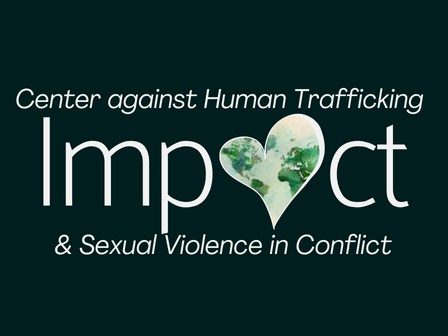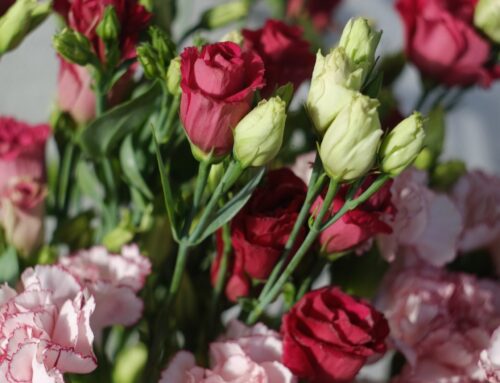By: Chiun Min Seah, Sophie De Spiegeleir, and Lilly Rose Oker
IMPACT organised a Gender Justice Summer School and women from different countries, cultures, and professional backgrounds attended it. We all thought that it was certainly one of the best decisions many of us have ever made in attending the Summer School. Not only did we gain invaluable knowledge but we also forged lifetime friendships. We will take you on a two-week journey of the course and perhaps you will enjoy it vicariously and it will inspire you to participate in the next year!
The Summer School (The Possibility of Realizing Gender Justice? Opportunities and Challenges in Addressing Conflict-Related Sexual Violence and Human Trafficking) intended to tackle the problems and prospects when confronted with issues of sexual violence in conflict and human trafficking and how the current approaches are contributing towards gender justice. It was structured in a very organised way where the first week was focused on discussing conflict-related sexual violence and the second; human trafficking, and both topics examined and explored closely, independently, and jointly within the frame of attaining gender justice. All of us learnt so much during the Summer School – it was truly an incredible experience in all sense of the word!
Anne-Marie de Brouwer is a household name in the field of sexual violence in conflict and Eefje de Volder is the equivalent in the area of human trafficking. The first week entailed of learning about the nature and scope of conflict-related sexual violence and challenges and opportunities in addressing such crimes through legal and non-legal mechanisms. What does one mean when we speak of gender justice? What does it entail? What would be an all-inclusive and all-encompassing definition when we speak of gender justice? In a Summer School which is designed to cover the topic of gender justice, all participants were females. Does this mean that when we converse about gender, it will automatically translate to them being only women’s issues?
Although we were all female, we tried our best to overcome the cliché of thinking of gender issues as women’s issues as we did an exercise of coming up with an all-inclusive definition of gender which includes men and LGBTQIA community (Lesbian, Gay, Bisexual, Transgender, Queer, Intersex, and Asexual). It was more difficult than we thought! The definition that we have come up with for gender justice is “provision of rights and access to them irrespective of socially and culturally understood conceptions of gender differences and roles. Gender justice needs to be achieved through legal and non-legal mechanisms.” What about men had been sexually abused either by men or women? After all, “everyone has heard the women’s stories. But nobody has heard the men’s.” What about the terms that we use to attach to people who have suffered conflict-related sexual violence? Why do we sometimes use “victims” and other times “survivors” when the latter gives them a sense of agency and power whilst the former does not?
As the week went on, we discussed whether the challenges and opportunities in ensuring the rights and needs of victims/survivors of conflict-related sexual violence are met. Do we know what is actually important for victims/survivors? Is it punishment that they are looking for towards their perpetrators? Or is it the acknowledgement of their harrowing experiences? We realised that victims of the Rwandan genocide felt the need to forgive their perpetrators for various reasons, especially during the Gacaca court trials. Some of the survivors of sexual violence felt the societal pressure to forgive their perpetrators and others felt that they preferred for their perpetrators to be punished and justifiably so too. There are also survivors who needed to forgive the perpetrators for their own piece of mind and to be able to rebuild their lives.
Then came the question of definitions of these crimes or the lack thereof of a specific/inclusive definition for instance with forced marriage, rape, and sexual violence in genocide. Forced marriage when truly inspected is different from sexual slavery and conjugal slavery. Slavery itself involves an element of ownership; marriage insinuates traditional domestic duties that come with matrimony; sexual and conjugal blatantly involves sexual intercourse. When put together these words and their meanings to cover specific situations to prosecute these crimes, getting an accurate definition and labelling is not that easy to do. There are also these square boxes which we prefer to fit perpetrators and victims in – perpetrators cannot be victims and vice versa but this relationship is not that transparent. As we can see in the case of Dominic Ongwen tried at the International Criminal Court (ICC), he was a former child soldier who became a perpetrator. Does that mean that his history is irrelevant as soon as he stepped into the shoes of a perpetrator? We had a visit to the ICC and saw the trial of Bosco Ntaganda who was charged with a list of war crimes and crimes against humanity including rape and sexual slavery.
On the final day of week one, we explored the prevention of sexual violence in conflict. Is it actually possible to prevent sexual violence in times of international or non-international armed conflict? Interestingly, research has shown that it is actually possible to prevent sexual violence during conflicts. We discussed how most authorities prefer not to invest in prevention simply because it is difficult to produce results which is not what would be preferable in politics.
In the second week, we learnt about human trafficking. Perhaps when one talks about human trafficking, one thinks of sexual slavery/exploitation but human trafficking also involves labour exploitation, forced removal of organs, forced begging, and forced criminality (the latter two are only criminalised within the EU) where a victim is compelled to carry out criminal activities. There is also a misconception where most people think that modern slavery is human trafficking. It is true to an extent but human trafficking is more than that and there are different forms of human trafficking. There may not be paper trails of the crime going on but there could still be legal ownership of a person which would constitute as human trafficking. But how do we know when a situation is actually human trafficking or if it is simply a situation where the person is experiencing bad working conditions? If we add human smuggling into the mix, how do we distinguish human trafficking from human smuggling?
When we discovered the nature and scope of human trafficking and the challenges and opportunities in addressing the crime through legal and non-legal mechanisms, the lines between all these different issues seem to both become clearer and blurrier at the same time. And when we looked at victims’ rights and needs when they have experienced human trafficking, we learned practically from CoMensha (Dutch coordination centre for victims of human trafficking) about how victims are provided support on various levels of their exploitation. The dynamics between the victims amongst themselves are quite complex as those who are protected within institutions which deal with human trafficking could be in different stages of protection and healing process. One who has “broken off” – so to speak – from their perpetrators could quite possibly build a new life and start the healing process but one who is still connected somehow to his/her trafficker could not only jeopardise themselves but also the other victims’ safety and welfare. All of us were shocked to discover that 30% of human trafficking victims’ country of origin is the Netherlands. This goes to show how the fallacy of human trafficking cases which occur being mostly transnational or cross-border instances is deeply ingrained in our perceptions. It has been reported that the “largest group of identified trafficking victims are Dutch girls enticed by young make traffickers, “lover boys,” who establish sham romantic relationships with vulnerable girls before intimidating them into sexual exploitation.”
One of the questions that we seem to realise that links conflict-related sexual violence and human trafficking is this: Why is there a reluctance in talking about these crimes on all levels? This seems to cut across all cultures and traditions, but why is this the case? Why is it that society seems to perpetuate the cycle of shaming and blaming victims either directly or indirectly when we turn a blind eye or avoid talking about these issues? All these crimes happen right in front of us but why is it that only those who are passionate about the subject seem to care and take action to make positive change? Why is it that the general human population appear to pick and choose what we care about?
We implore you to be aware and proactive about all these issues and #MakeAnIMPACT! Change does not happen overnight and it certainly cannot be done with just those who are in the field. Change can only happen when more and more people start caring and lend a hand in these issues in any way that they can. Educate yourselves about human trafficking and sexual violence in conflict; you have nothing to lose. If anything, you gain more knowledge in your arsenal and you will be able to recognise the possible signs of a person who is being human trafficked and/or victims of sexual violence. These situations could happen to anyone, your brother, your cousin, your best friend, your significant other. There is no manual for the list of possible victims; the pool for people who could end up being in these terrible situations is exactly right in front of you – everyone could be a victim. YOU can make a difference in your own ways with people around you, especially those you care and love. BE the change and #MakeAnIMPACT!




